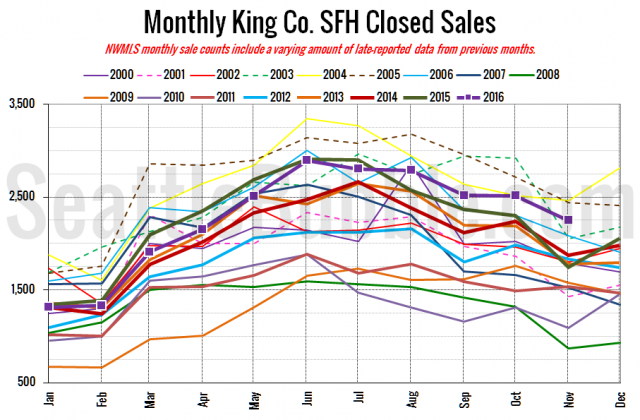Trends to Watch in 2017: Uncertainty in the Land Market Created by MIZ
Almost every forecast for single-family home prices and for apartment rents is indicating that prices will still be going up because of a lack of inventory. This means buildable land will also be more expensive. But I think a trend to watch will be growing uncertainty among both sellers of land and buyers created by the Seattle City Council’s slapdash approach to land use regulation and especially what they’re doing with Mandatory Inclusionary Zoning (MIZ). Sellers are going to be watching for opportunities to ask for more money, and buyers will be eying new rules and taxes to find discounts. With the Council going back and forth on how much to tax housing development with MIZ, a scheme that charges a tax on all new housing and adds small upzones, the lack of clarity is likely to draw out the purchasing process and thus the production of housing.
My prediction about this is based entirely on anecdotes I have been hearing lately from builders and people who buy and sell land for them. One person I talked to said one seller had the proposed upzone map for MIZ with his property circled. This was a reason for him to demand more money for the property since the City’s up zone would allow more housing to be built there. But the pushback is that the zoning changes are far off and they come with a tax that I’ve already shown will make building on the property more difficult and costly.
One argument prevalent at City Hall is that buyers will push harder on sellers to lower prices because the fees will lower the Residual Land Value (RLV) calculation. If you remember, RLV is how the City is testing the feasibility of MIZ and their last report agreed that fees will have a negative impact on financing. However, using the RLV method of testing feasibility implicitly relies on the idea that land prices will drop in exactly the amount as the fees and costs associated with building under the MIZ scheme. The exact opposite is happening in the market with sellers seeing the possible upzones as an incentive to sit tight and sell higher once the upzones pass.
The Council hasn’t even passed any MIZ upzones yet and already the market is feeling some tightening in supply of buildable land because sellers are holding out for more, not buyers walking away because they want to pay less. Either of these scenarios, however, means that the lot in question will stay what it is, under built, rather than turning into housing for more people. That means less supply and higher prices. Let’s hope that in 2017 we get smarter about housing economics and dispense with MIZ. It’s likely the proposal will be doing harm even before the upzones are implemented.
Featured image from Seattle Bubble.


